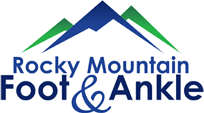You've been dealing with persistent heel pain for months. Traditional treatments haven't provided the relief you need, and your Idaho podiatrist at Rocky Mountain Foot & Ankle has recommended platelet-rich plasma (PRP) therapy. While you're hopeful about this regenerative treatment option, you're understandably concerned about potential discomfort during the procedure.
Our patients frequently ask about pain levels associated with PRP injections. The good news is that most people find the procedure more comfortable than they expected. Understanding what happens during treatment and knowing effective pain management strategies might ease your concerns about this promising therapy option. We’re here to help.
Understanding the PRP Injection Process ![Idaho-podiatrist-administering-PRP-injection-in-foot]()
Comprehensive PRP therapy is often a top recommendation for chronic troublesome issues such as plantar fasciitis, Achilles tendonitis, ankle sprains, and diabetic foot ulcers. The method involves drawing a small amount of your blood, processing it in a centrifuge to concentrate the healing platelets, and then injecting this concentrated solution directly into the injured tissue. The entire procedure typically takes 30 to 45 minutes in our Caldwell or Meridian office.
We clean and prepare the injection site thoroughly before beginning the procedure. The injection itself feels similar to receiving a vaccination or having blood drawn. Most patients describe the sensation as a brief pinch or pressure at the injection site. The needle used is relatively small, and the actual injection takes only a few seconds to complete. Most patients report that anticipating the injection feels worse than the actual experience.
How Will Our Podiatry Staff Help Minimize PRP Treatment Discomfort?
The compassionate care team at Rocky Mountain Foot & Ankle respects that each person feels sensations differently. Several techniques can help minimize discomfort during PRP injections, though their use must balance comfort with preserving the biological activity of the PRP. If necessary, we’ll discuss options such as:
- Local anesthesia. Some clinicians inject a small amount of local anesthetic to numb the treatment area before the PRP injection. Usually this application is in low concentrations and limited volumes to avoid impairing platelet/growth factor function.
- Topical numbing cream. This is applied 15–20 minutes before the procedure and may reduce surface sensitivity and the sting of needle entry, although it has limited effect on deeper tissues.
- Cold application just before injection. A cold spray or gentle cooling immediately before needle insertion might diminish the sharp sensation of the needle. However, many PRP protocols caution against extensive icing or cooling, since vasoconstriction may counteract the intended biological effects of PRP.
- Relaxation techniques. Deep breathing, guided imagery, or other calming methods help reduce anxiety and alter pain perception, which could improve your comfort during the procedure.
The specific location of your injection also influences discomfort levels. Areas with more nerve endings or thicker tissue may cause slightly more sensation during injection.
A podiatrist's experience matters, too. Our team regularly performs PRP injections, so we’re skilled at completing the procedure more quickly and efficiently, reducing overall discomfort.
What Can I Expect After PRP Therapy?
Post-injection discomfort varies among patients, but most experience only mild to moderate soreness at the injection site. This temporary discomfort typically peaks within the first 24 to 48 hours after treatment. You might also notice common post-procedure sensations such as:
- Mild aching or throbbing at the injection site
- Slight swelling around the treated area
- Temporary stiffness in the foot or ankle
- Localized tenderness when walking or applying pressure
These symptoms are actually positive signs that PRP is stimulating your body's natural healing response. The concentrated platelets release growth factors that promote tissue repair and regeneration.
Your podiatrist at Rocky Mountain Foot & Ankle will also provide specific post-treatment guidelines to reduce discomfort and optimize healing. These might include:
- Immediate care. Depending on your treatment protocol, it could be helpful to minimize swelling and numbness with elevation and periodic use of a heating pad or an ice pack.
- Activity modifications. For a few days following treatment, we might recommend avoiding high-impact activities while allowing gentle movement to promote circulation and healing.
- Pain relief options. These could include over-the-counter medications like acetaminophen. Anti-inflammatory medications such as ibuprofen are usually discouraged immediately after PRP injections because they may interfere with the natural inflammatory healing process.
Most patients find that any post-injection discomfort resolves within three to five days. The healing benefits of PRP therapy often become apparent within two to six weeks after treatment.
PRP therapy offers significant potential benefits for various foot and ankle conditions with minimal pain during the actual procedure. While some temporary soreness afterward is normal, most patients find the discomfort manageable and short-lived compared to the long-term relief PRP can provide.

